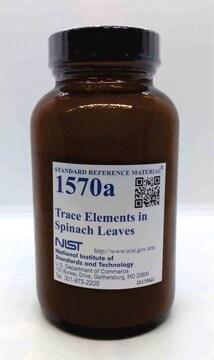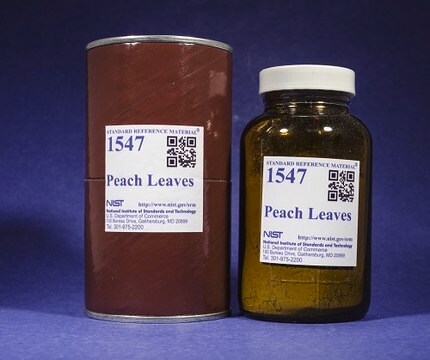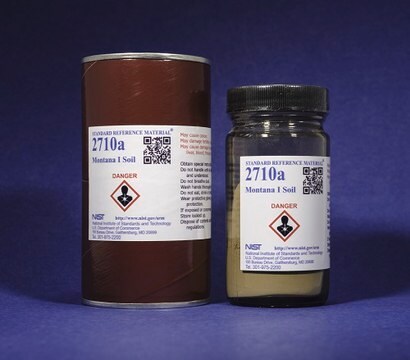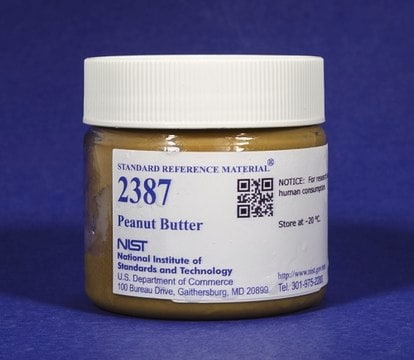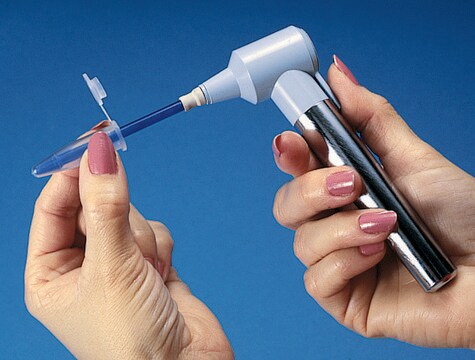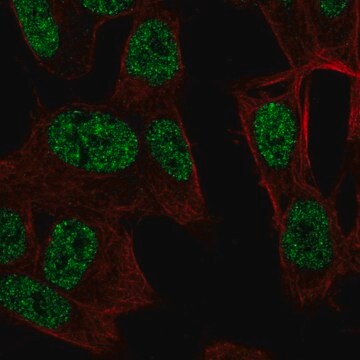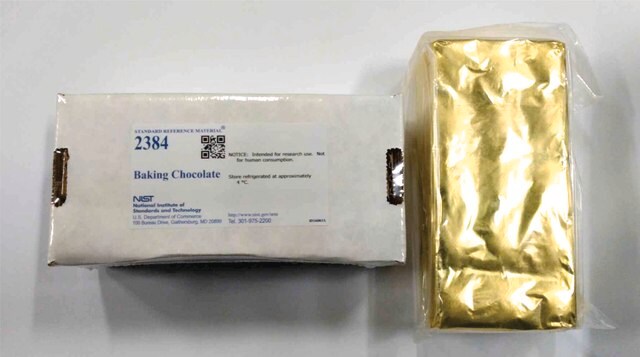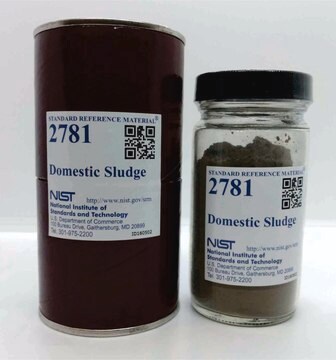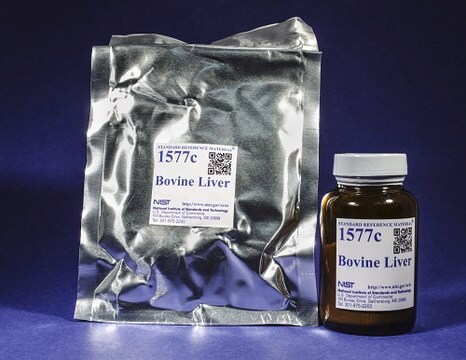推荐产品
應用
番茄叶已用作以下应用的标准参考材料:
- 评价食品样品中铜和镍的浊点萃取方法
- 测定能量色散 X 射线荧光光谱法(EDXRF)进行营养分析的精度
- 评估高分辨率连续流源火焰分子吸收光谱法(HR-CS-FMAS)测定食品中硫的准确性
- 评估热喷雾火焰炉原子吸收光谱仪(TS-FF-AAS)测定生物材料中钴的准确性
生化/生理作用
番茄叶富含钙、镁、钾和磷。叶片中存在的其他微量营养素包括硫、硼、锰、铁、铜、锌和钼。所有这些营养素构成蛋白质和核酸等大分子。另外,有助于调节植物的酶活性,并有助于正常的生长和繁殖。
其他說明
已认证可用于以下列出的分析物。请参阅证书以获取相关数值和更多详细信息
凯氏氮,总氮,磷
微量元素:铝(Al)、锑(SB)、砷(As)、钡(Ba)、硼(B)、溴(Br)、镉(Cd)、钙(Ca)、铯(Cs)、氯(Cl2)、铬(Cr)、钴(Co)、铜(Cu)、钆(Gd)、铪(Hf)、氢(H)、碘(I)、铁(Fe)、镧(La)、镁(Mg)、锰(Mn)、汞(Hg)、钼(Mo)、镍(Ni)、钾(K)、铷(Rb)、钐(Sm)、钪(Sc)、硒(Se)、银(Ag)、钠(Na)、锶(Sr)、硫(S)、钍(Th)、铀(U)、钒(V)、锌(Zn)
基质分类:水果和蔬菜
凯氏氮,总氮,磷
微量元素:铝(Al)、锑(SB)、砷(As)、钡(Ba)、硼(B)、溴(Br)、镉(Cd)、钙(Ca)、铯(Cs)、氯(Cl2)、铬(Cr)、钴(Co)、铜(Cu)、钆(Gd)、铪(Hf)、氢(H)、碘(I)、铁(Fe)、镧(La)、镁(Mg)、锰(Mn)、汞(Hg)、钼(Mo)、镍(Ni)、钾(K)、铷(Rb)、钐(Sm)、钪(Sc)、硒(Se)、银(Ag)、钠(Na)、锶(Sr)、硫(S)、钍(Th)、铀(U)、钒(V)、锌(Zn)
基质分类:水果和蔬菜
法律資訊
NIST is a registered trademark of National Institute of Standards and Technology
SRM is a registered trademark of National Institute of Standards and Technology
儲存類別代碼
13 - Non Combustible Solids
水污染物質分類(WGK)
WGK 3
其他客户在看
Determination of sulfur in food by high resolution continuum source flame molecular absorption spectrometry
Zambrzycka E and Godlewska-Zylkiewicz B
Spectrochimica Acta. Part B: Atomic Spectroscopy, 101, 234-239 (2014)
Minerals, vitamins and chlorophyll contents of fruits, stems and leaves of tomato and garden egg
Kadiri M, et al.
Pakistan Journal of Medical Sciences, 25(3), 150-154 (2015)
Acid extraction and cloud point preconcentration as sample preparation strategies for cobalt determination in biological materials by thermospray flame furnace atomic absorption spectrometry
Donati GL, et al.
Microchemical Journal, Devoted to the Application of Microtechniques in All Branches of Science, 82(2), 189-195 (2006)
Mineral nutrition of tomato
Sainju UM, et al.
Journal of food, agriculture & environment, 1(2), 176-183 (2003)
Simple procedure for nutrient analysis of coffee plant with energy dispersive X-ray fluorescence spectrometry (EDXRF)
Tezotto T, et al.
Scientia Agricola, 70(4), 263-267 (2013)
我们的科学家团队拥有各种研究领域经验,包括生命科学、材料科学、化学合成、色谱、分析及许多其他领域.
联系技术服务部门
